Directing the Eye  Part 1 - Psychological Elements Composition is the art of arranging things in a photograph to achieve the maximum impact. It is affected by where you choose to place objects, how you pose models, and how you frame everything with your lens. It is a choice of movement, either you move, or what is seen through the lens moves. In addition to the composition choices you make, there are elements in a photograph that direct the eye for psychological reasons. These psychological and visual elements are so compelling they will draw attention in even the worst of photographs. Understanding composition, and the individual elements that direct the eye, is vital to creating stronger images. Psychological Elements The psychological elements that draw the eye (Faces, Eyes, Pattern Interruption, and Text) arise from the depths of our evolutionary history. Man?s early survival depended on being able to spot predators and see danger. Brains and eyes use those same techniques we used back on the savannah when we look at photographs. The way we look at things in real life doesn?t suddenly change because we are looking at an image. If the psychological elements are present in a photograph, they will have an irresistible draw on where the viewer looks. Faces / People - Our brains are hardwired to look for and find faces. This is so much a part of us, we see faces in random objects. This is called pareidolia, and it is why you are not crazy if you see Elvis on a tortilla. This is part of being human. If a face is discernible, it will be looked at. If there is a person in a photograph we will look at them and try to see what they are doing. Faces and people can be blurry, or in shadow, but they will be looked at.
Part 1 - Psychological Elements Composition is the art of arranging things in a photograph to achieve the maximum impact. It is affected by where you choose to place objects, how you pose models, and how you frame everything with your lens. It is a choice of movement, either you move, or what is seen through the lens moves. In addition to the composition choices you make, there are elements in a photograph that direct the eye for psychological reasons. These psychological and visual elements are so compelling they will draw attention in even the worst of photographs. Understanding composition, and the individual elements that direct the eye, is vital to creating stronger images. Psychological Elements The psychological elements that draw the eye (Faces, Eyes, Pattern Interruption, and Text) arise from the depths of our evolutionary history. Man?s early survival depended on being able to spot predators and see danger. Brains and eyes use those same techniques we used back on the savannah when we look at photographs. The way we look at things in real life doesn?t suddenly change because we are looking at an image. If the psychological elements are present in a photograph, they will have an irresistible draw on where the viewer looks. Faces / People - Our brains are hardwired to look for and find faces. This is so much a part of us, we see faces in random objects. This is called pareidolia, and it is why you are not crazy if you see Elvis on a tortilla. This is part of being human. If a face is discernible, it will be looked at. If there is a person in a photograph we will look at them and try to see what they are doing. Faces and people can be blurry, or in shadow, but they will be looked at. 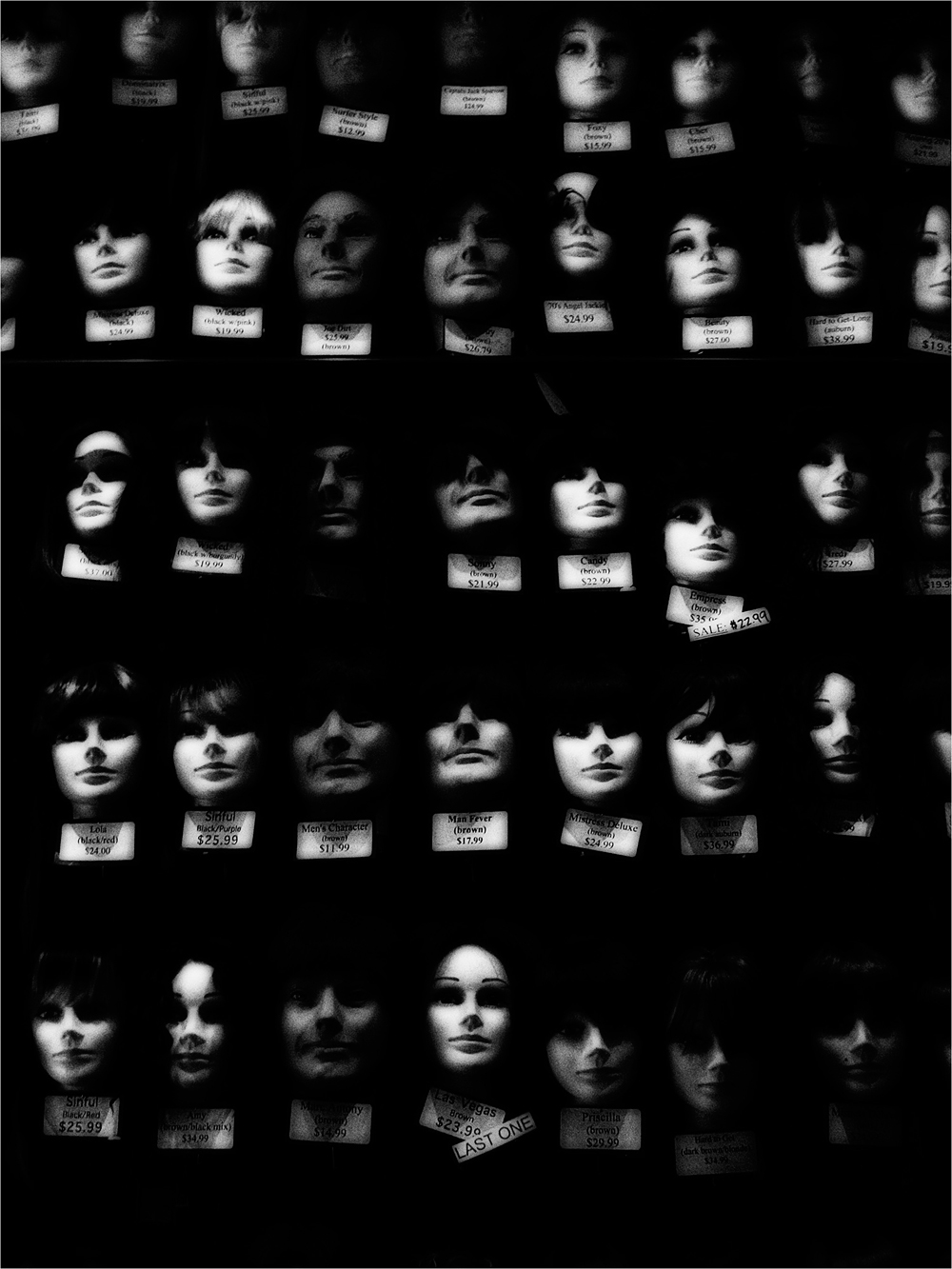 Eyes - We are immediately attracted to eyes because they signal so much information. Eyes can reveal if someone is attracted to us (dilated pupils), where someone is looking, their emotional state and possibly what type of thoughts someone is thinking (Eye-Accessing Cues). In addition to their psychological impact eyes also contain one of the areas of greatest contrast on the body. You have the whites of the eyes (Sclera), the outer dark circle of the Iris (The Limbal Ring) which surrounds the the colored part of the eye (Iris) and then the pupil. Even for people with brown or dark irises, the amount of contrast in the eyes compels us to look at them.
Eyes - We are immediately attracted to eyes because they signal so much information. Eyes can reveal if someone is attracted to us (dilated pupils), where someone is looking, their emotional state and possibly what type of thoughts someone is thinking (Eye-Accessing Cues). In addition to their psychological impact eyes also contain one of the areas of greatest contrast on the body. You have the whites of the eyes (Sclera), the outer dark circle of the Iris (The Limbal Ring) which surrounds the the colored part of the eye (Iris) and then the pupil. Even for people with brown or dark irises, the amount of contrast in the eyes compels us to look at them. 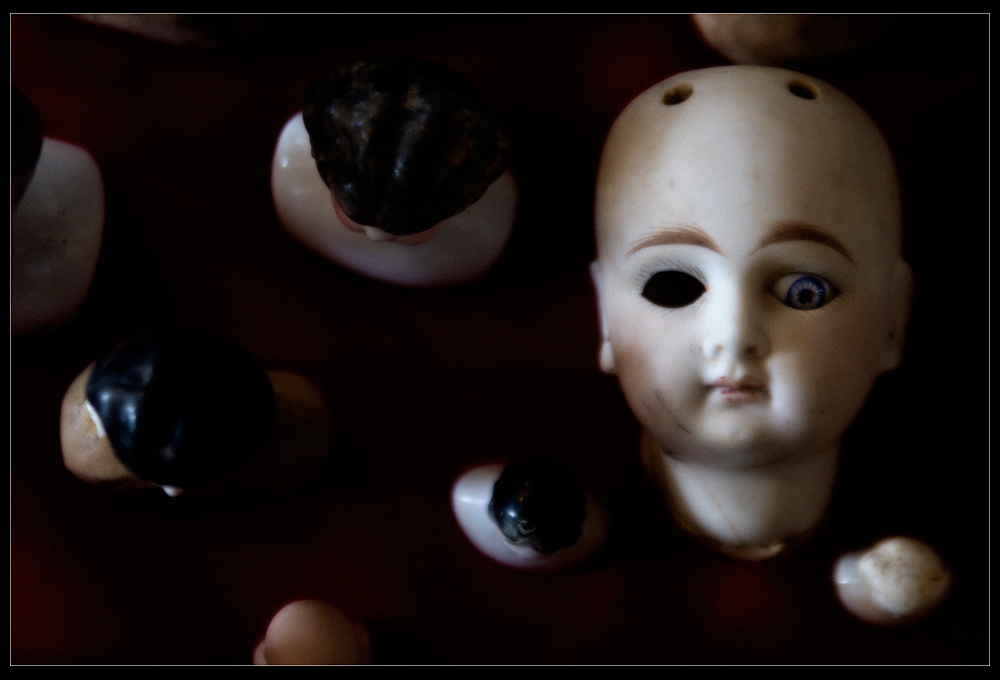 Pattern Interruption - Our early history was fraught with a lot of dangers. There could be countless things hiding in the bushes ready to jump out and eat us. So we developed the ability to scan the environment looking for irregularities. So when we see grass, grass, lion, grass, our eyes ignore the grass and jump back to the thing in-between. The pattern can be anything, vertical blinds, tall grass, a brick wall, but interrupt that pattern and we will look there.
Pattern Interruption - Our early history was fraught with a lot of dangers. There could be countless things hiding in the bushes ready to jump out and eat us. So we developed the ability to scan the environment looking for irregularities. So when we see grass, grass, lion, grass, our eyes ignore the grass and jump back to the thing in-between. The pattern can be anything, vertical blinds, tall grass, a brick wall, but interrupt that pattern and we will look there. 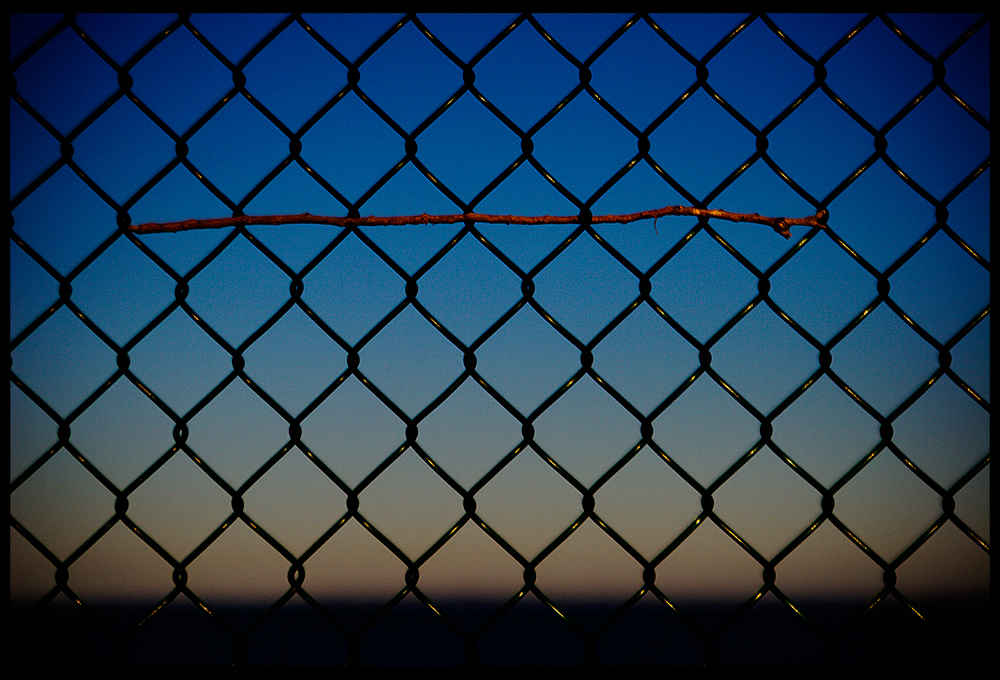 Text - The ability to read and understand symbols did not form out of our need to see things. It has the same effect, but comes from a different place. It is a result of our developed intelligence and our need to communicate and store information. Reading is an acquired skill that has become second nature to us. If there is text in your photograph, it will be read. It doesn?t matter if the text is reversed, it will be read. The process is instantaneous and unconscious. You can not prevent yourself from reading a word, if it is large enough and legible enough in your photo it will be seen. Text will also re-enforce the left to right bias our eyes have when scanning and can effect how the eye moves through an image.
Text - The ability to read and understand symbols did not form out of our need to see things. It has the same effect, but comes from a different place. It is a result of our developed intelligence and our need to communicate and store information. Reading is an acquired skill that has become second nature to us. If there is text in your photograph, it will be read. It doesn?t matter if the text is reversed, it will be read. The process is instantaneous and unconscious. You can not prevent yourself from reading a word, if it is large enough and legible enough in your photo it will be seen. Text will also re-enforce the left to right bias our eyes have when scanning and can effect how the eye moves through an image. 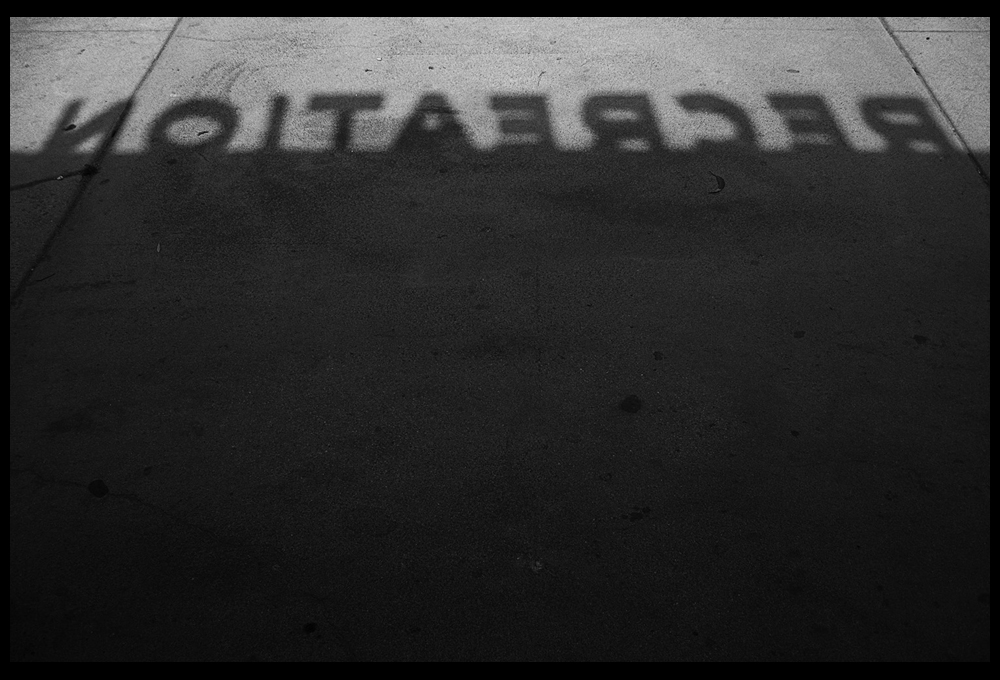 Understanding how these elements affect the way an eye moves through an image is valuable. The impact of including or removing them will greatly alter your photograph. It can help to remove some of them if they compete with your main subject. If you are taking portraits you might not want the subject wearing a t-shirt with writing on it. For product photography you might not want a face competing with the brand name. Landscape and nature photography (without animals) lack the psychological elements of faces, eyes or text. So you can use pattern interruption or the visual elements to direct the eye.
Understanding how these elements affect the way an eye moves through an image is valuable. The impact of including or removing them will greatly alter your photograph. It can help to remove some of them if they compete with your main subject. If you are taking portraits you might not want the subject wearing a t-shirt with writing on it. For product photography you might not want a face competing with the brand name. Landscape and nature photography (without animals) lack the psychological elements of faces, eyes or text. So you can use pattern interruption or the visual elements to direct the eye. 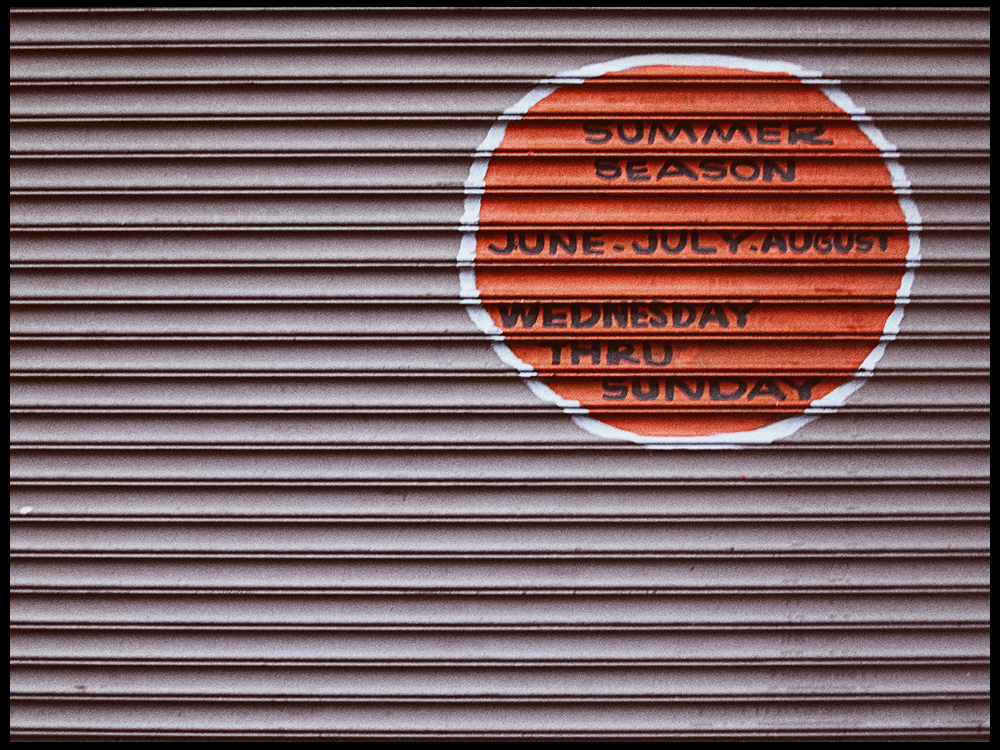 Knowing there are other elements directing the eye apart from composition is an important lesson to learn. How these work together and affect your final outcome is vital to creating the strongest photographs possible. In the next parts of this series we will explore the visual elements of Contrast, Color, Focus and Size, and how they work together to direct the eye. These are some of the basic decisions we make as photographers, but their effect and power are often overlooked. All images ©Thann Clark
Knowing there are other elements directing the eye apart from composition is an important lesson to learn. How these work together and affect your final outcome is vital to creating the strongest photographs possible. In the next parts of this series we will explore the visual elements of Contrast, Color, Focus and Size, and how they work together to direct the eye. These are some of the basic decisions we make as photographers, but their effect and power are often overlooked. All images ©Thann Clark
 Part 1 - Psychological Elements Composition is the art of arranging things in a photograph to achieve the maximum impact. It is affected by where you choose to place objects, how you pose models, and how you frame everything with your lens. It is a choice of movement, either you move, or what is seen through the lens moves. In addition to the composition choices you make, there are elements in a photograph that direct the eye for psychological reasons. These psychological and visual elements are so compelling they will draw attention in even the worst of photographs. Understanding composition, and the individual elements that direct the eye, is vital to creating stronger images. Psychological Elements The psychological elements that draw the eye (Faces, Eyes, Pattern Interruption, and Text) arise from the depths of our evolutionary history. Man?s early survival depended on being able to spot predators and see danger. Brains and eyes use those same techniques we used back on the savannah when we look at photographs. The way we look at things in real life doesn?t suddenly change because we are looking at an image. If the psychological elements are present in a photograph, they will have an irresistible draw on where the viewer looks. Faces / People - Our brains are hardwired to look for and find faces. This is so much a part of us, we see faces in random objects. This is called pareidolia, and it is why you are not crazy if you see Elvis on a tortilla. This is part of being human. If a face is discernible, it will be looked at. If there is a person in a photograph we will look at them and try to see what they are doing. Faces and people can be blurry, or in shadow, but they will be looked at.
Part 1 - Psychological Elements Composition is the art of arranging things in a photograph to achieve the maximum impact. It is affected by where you choose to place objects, how you pose models, and how you frame everything with your lens. It is a choice of movement, either you move, or what is seen through the lens moves. In addition to the composition choices you make, there are elements in a photograph that direct the eye for psychological reasons. These psychological and visual elements are so compelling they will draw attention in even the worst of photographs. Understanding composition, and the individual elements that direct the eye, is vital to creating stronger images. Psychological Elements The psychological elements that draw the eye (Faces, Eyes, Pattern Interruption, and Text) arise from the depths of our evolutionary history. Man?s early survival depended on being able to spot predators and see danger. Brains and eyes use those same techniques we used back on the savannah when we look at photographs. The way we look at things in real life doesn?t suddenly change because we are looking at an image. If the psychological elements are present in a photograph, they will have an irresistible draw on where the viewer looks. Faces / People - Our brains are hardwired to look for and find faces. This is so much a part of us, we see faces in random objects. This is called pareidolia, and it is why you are not crazy if you see Elvis on a tortilla. This is part of being human. If a face is discernible, it will be looked at. If there is a person in a photograph we will look at them and try to see what they are doing. Faces and people can be blurry, or in shadow, but they will be looked at.  Eyes - We are immediately attracted to eyes because they signal so much information. Eyes can reveal if someone is attracted to us (dilated pupils), where someone is looking, their emotional state and possibly what type of thoughts someone is thinking (Eye-Accessing Cues). In addition to their psychological impact eyes also contain one of the areas of greatest contrast on the body. You have the whites of the eyes (Sclera), the outer dark circle of the Iris (The Limbal Ring) which surrounds the the colored part of the eye (Iris) and then the pupil. Even for people with brown or dark irises, the amount of contrast in the eyes compels us to look at them.
Eyes - We are immediately attracted to eyes because they signal so much information. Eyes can reveal if someone is attracted to us (dilated pupils), where someone is looking, their emotional state and possibly what type of thoughts someone is thinking (Eye-Accessing Cues). In addition to their psychological impact eyes also contain one of the areas of greatest contrast on the body. You have the whites of the eyes (Sclera), the outer dark circle of the Iris (The Limbal Ring) which surrounds the the colored part of the eye (Iris) and then the pupil. Even for people with brown or dark irises, the amount of contrast in the eyes compels us to look at them.  Pattern Interruption - Our early history was fraught with a lot of dangers. There could be countless things hiding in the bushes ready to jump out and eat us. So we developed the ability to scan the environment looking for irregularities. So when we see grass, grass, lion, grass, our eyes ignore the grass and jump back to the thing in-between. The pattern can be anything, vertical blinds, tall grass, a brick wall, but interrupt that pattern and we will look there.
Pattern Interruption - Our early history was fraught with a lot of dangers. There could be countless things hiding in the bushes ready to jump out and eat us. So we developed the ability to scan the environment looking for irregularities. So when we see grass, grass, lion, grass, our eyes ignore the grass and jump back to the thing in-between. The pattern can be anything, vertical blinds, tall grass, a brick wall, but interrupt that pattern and we will look there.  Text - The ability to read and understand symbols did not form out of our need to see things. It has the same effect, but comes from a different place. It is a result of our developed intelligence and our need to communicate and store information. Reading is an acquired skill that has become second nature to us. If there is text in your photograph, it will be read. It doesn?t matter if the text is reversed, it will be read. The process is instantaneous and unconscious. You can not prevent yourself from reading a word, if it is large enough and legible enough in your photo it will be seen. Text will also re-enforce the left to right bias our eyes have when scanning and can effect how the eye moves through an image.
Text - The ability to read and understand symbols did not form out of our need to see things. It has the same effect, but comes from a different place. It is a result of our developed intelligence and our need to communicate and store information. Reading is an acquired skill that has become second nature to us. If there is text in your photograph, it will be read. It doesn?t matter if the text is reversed, it will be read. The process is instantaneous and unconscious. You can not prevent yourself from reading a word, if it is large enough and legible enough in your photo it will be seen. Text will also re-enforce the left to right bias our eyes have when scanning and can effect how the eye moves through an image.  Understanding how these elements affect the way an eye moves through an image is valuable. The impact of including or removing them will greatly alter your photograph. It can help to remove some of them if they compete with your main subject. If you are taking portraits you might not want the subject wearing a t-shirt with writing on it. For product photography you might not want a face competing with the brand name. Landscape and nature photography (without animals) lack the psychological elements of faces, eyes or text. So you can use pattern interruption or the visual elements to direct the eye.
Understanding how these elements affect the way an eye moves through an image is valuable. The impact of including or removing them will greatly alter your photograph. It can help to remove some of them if they compete with your main subject. If you are taking portraits you might not want the subject wearing a t-shirt with writing on it. For product photography you might not want a face competing with the brand name. Landscape and nature photography (without animals) lack the psychological elements of faces, eyes or text. So you can use pattern interruption or the visual elements to direct the eye.  Knowing there are other elements directing the eye apart from composition is an important lesson to learn. How these work together and affect your final outcome is vital to creating the strongest photographs possible. In the next parts of this series we will explore the visual elements of Contrast, Color, Focus and Size, and how they work together to direct the eye. These are some of the basic decisions we make as photographers, but their effect and power are often overlooked. All images ©Thann Clark
Knowing there are other elements directing the eye apart from composition is an important lesson to learn. How these work together and affect your final outcome is vital to creating the strongest photographs possible. In the next parts of this series we will explore the visual elements of Contrast, Color, Focus and Size, and how they work together to direct the eye. These are some of the basic decisions we make as photographers, but their effect and power are often overlooked. All images ©Thann Clark






